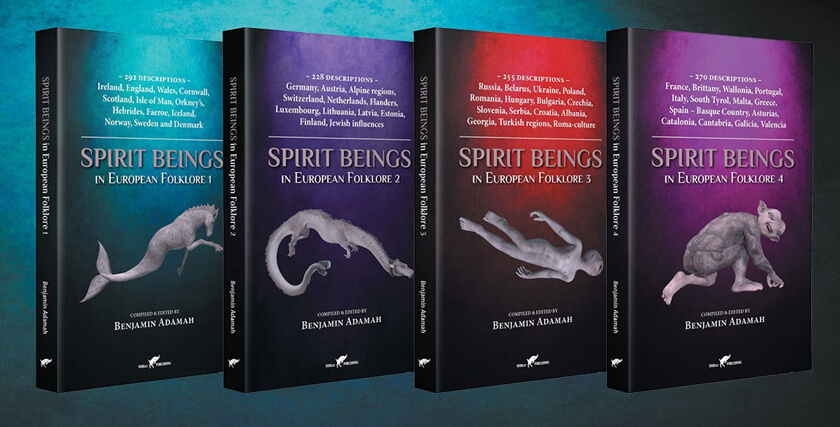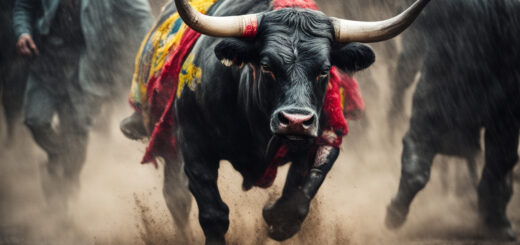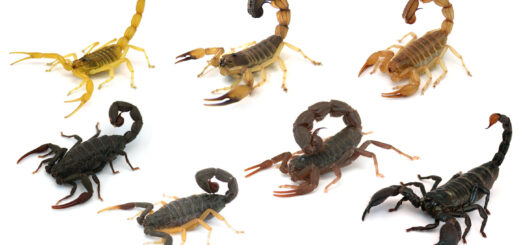Huldra or Skogsrå, the femme fatale of the Scandinavian forests
A Huldra or Hulder is a seductive – usually female – forest creature found in Scandinavian folklore. Her name derives from a root meaning “covered” or “secret”. In Norwegian folklore, she is known as Huldra or Huldran. Her name suggests that she may originally be the same being as the divine figure Huld and the German Holda. Huldra is the same creature as the Skogsrå(et) (“forest spirit”).

In Sweden she is also known as the (Skogsrået lit. ”the forest Rå”), Skogsrådan, Skogsråa (“forest ruler”), Råan, Rådande (“the ruler, the ruling spirit”), Skogsjungfru (“forest maiden”), Skogsfru, Skogssnuva (“forest woman”), Skogskäringen (“the forest hag”), Skogsfrun (“mistress of the forest”), Skogsnymfen (“forest nymph”) or with a nickname such as Grankotte–Maja (“Spruce cone-Maja”), Grankotte-Kari (“Spruce cone-Kari”), Talle-Maja (“Pine tree-Maja”).
She can also be called by a name that is local and not known outside a certain area such as Gonna, Besta, Rånda, Skogela, Trasåsa-frun, Lanna-frökna (“The lady of Lanna”) or Ysäters-Kajsa, Kajsa or Ysäter. On the island of Gotland, there are records of a female troll known as Torspjäska that plays the same role and has the same function as forest spirit on the mainland. In in Sámi folklore she is known as Ulda.

19th century drawing of Huldra with a tail by the artist Theodor Kittelsen : (1892)
Some names in the Finnish language, mainly from the west coast, also show a link to the Swedish traditions, for example, Metsänpiika (“forest girl”) or Metsänneito (“forest maid”) are the most widespread words used in Finland for the female forest spirit. There are also other localised names such as Haapaneitsyt (“Aspen-maid”) or Sinipiika (“blue maid”).
Folklore presupposes that there is an entire Hulder race and not just a solitary creature. In Norway, the word Huldrefolk or Huldre (plural) derived from Old Norse huldr ‘hidden’ is used for all kinds of supernatural beings, sighted and talked about by the folk. Hulder, or Huldra in the singular, signifies a female forest spirit, even though she might as well appear in mountains. The Huldra or Skogsrå may have originally belonged to a group of collective creatures similar to the South Swedish trolls. In some records, she is also called the Trollet (Troll), the Trollkäringen (Troll’s Witch). Similar creatures are found in the rest of Scandinavia: in the northern parts of the pastoral regions she is represented by Vittra, in Norway by Huldra, in Denmark by Elverpigen (the river-girl) or Mosekonen (Moss-woman). Compare the German Moosweiblein or Moosfraulein (lit. Little Moss-Woman).
The word Hulder is only used of a female; a male Hulder” is called a Huldrekall and also appears in Norwegian folklore. This being is closely related to other underground dwellers, usually called Tusser (sg., Tusse). The Hulders were held to be kind to charcoal burners, watching their charcoal kilns while they rested.
The seductive Skogsrå
The Skogsrå usually appears as a seductive female in the forest. She is the guardian of wild animals, which she sometimes bestows on those she pleases. She lures wanderers astray and seduces men she takes a liking to. She is flattering and affectionate, and has the ability to change her shape. When it comes to sexual activities, the female forest spirit plays the active part.
She approaches and tries to seduce the man by different means. If all else fails, she pulls up her skirt and shows him her genitals, in an attempt to have intercourse with him. It was believed that anyone who had sexual intercourse with a Skogsrå was in danger of becoming a dull and useless introvert – his soul having stayed with her.
If the seduced man was a hunter by profession, however, his love was rewarded with great hunting fortune, but it he became unfaithful to the Skogsrå, he suffered constant misfortune. The authorities took severe measures when someone copulated wit a spirit being. Folklorist Tommy Kuusela writes: “The crown and the church viewed intimate relationships with the forest spirit as a crime that could lead to catastrophic consequences.
Men accused for having sexual relations with the forest spirit, and women for having sexual relations with the water spirit (the neck), turns up several times in judicial records from the 1600s and 1700s in Sweden. The trial records show that people could be (and actually were) sentenced to death for this crime.” The Skogsrå used to visit men in the woods at night. These erotic encounters often took place in the charcoal stacks (kilns) or by a campfire.
Various local beliefs

Per Daniel Holm – Huldra – A hulder is talking with a charcoal burner. She looks like a young farmer woman, but her tail is peeking out under her skirt. From Svenska folksägner (1882)
If a man attracted by the Skogsrå gets lost in the woods, it was believed in Småland that he could find the right path by turning his shirt inside out and reciting Our Father.
Another regional variation is that in Svealand and southern Norrland the Skogsrå was said to have cattle, which she herded in the forest and which she lured. In the same area she also had a dog. In Skåne there was also a male Skogsrå called Skogman. This male Skogsrå was most common in south-eastern Skåne.
The Skogsrå also had positive qualities. By blowing down the gun barrel she could make sure that the gun never missed, however she made sure that the gun always missed her own ridges. She was said to have awakened people to warn them for a fire – a performance that was most common in Bergslagen. The Skogsrå also occasionally helped shepherdesses with their cattle.
In Götaland and south-eastern Svealand she was beautiful and attractive from the front, but seen from behind she often has a hollow back like an old tree, but be careful to show only the beautiful side. Further north, in Dalarna and other pastoral areas, she looks like an ordinary woman with a normal back, but usually has a cow’s tail or a horse’s tail, and sometimes a fox’s tail.
You may also like to read:
Huldufolk the hidden people of iceland
The mystery of the White Ladies
Aitvaras, fire snake aka household spirit of Lithuania
The Domovoy and other Fairies of Russian folklore
Wild Man or Woodwose
Sprite







